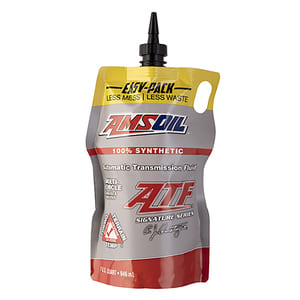Imagine driving along when your car suddenly gets stuck in second gear and the check engine light pops on. You’re faced with the unnerving problem: “my car won’t shift gears.” Before you jump to conclusions and consider replacing an expensive transmission, it might be a simpler issue, such as a faulty shift solenoid.

Understanding Check Engine Lights and Transmission Issues
Experiencing a car stuck in a single gear is disconcerting. It triggers the check engine light, indicating possible transmission problems. However, instead of rushing into costly repairs, proper diagnosis is crucial. Often, the issue lies with a shift solenoid—a component that’s far less expensive to address than a full transmission replacement.
Introduction to Shift Solenoids
Shift solenoids are crucial components in an automatic transmission system. Located within the valve body, these small devices manage the flow of transmission fluid to engage different gears. Essentially, they control gear shifts by receiving electrical signals from the vehicle’s computer, translating these signals into fluid movements that change gears.
Types of Shift Solenoids
Shift solenoids are often named based on the gears they control:
- 1-2 Shift Solenoid: Manages the transition between first and second gear.
- 2-3 Shift Solenoid: Controls the shift from second to third gear.
How Shift Solenoids Work

The operation of shift solenoids involves a series of on and off patterns controlled by the car’s computer:
- First Gear: Both solenoids are on.
- Second Gear: One solenoid is off while the other is on.
- Third Gear: Both solenoids are off.
- Fourth Gear: One solenoid is on, and the other is off.
These patterns enable the smooth transition between gears, ensuring efficient vehicle movement.
Potential Issues with Shift Solenoids
Shift solenoids are submerged in transmission fluid, making them susceptible to various issues influenced by fluid quality:
- Fluid Degradation: Over time, transmission fluid can break down, leading to potential deposit buildup.
- Maintenance Neglect: Inadequate fluid maintenance can result in the solenoid getting clogged, affecting its performance.
Diagnosing Shift Solenoid Problems
To diagnose issues with shift solenoids, accessing them within the valve body is necessary. This process typically involves removing the transmission pan and inspecting the solenoids visually. One effective test includes observing fluid flow; if the solenoid doesn’t move fluid properly, it may be problematic.
Electrical Testing of Shift Solenoids
A common diagnostic method involves using an ohmmeter to measure the solenoid’s electrical resistance. Typical readings should be around 21.3 to 21.4 ohms. However, even if these values appear normal, the solenoid can still malfunction due to internal issues such as deposits or varnish. Always consult the manufacturer’s service manual for specific recommendations.
Limitations of Electrical Testing
Passing an ohm test doesn’t always guarantee proper solenoid function. Internal components may still fail if clogged by deposits or degraded fluid, causing the solenoid to stick or malfunction, complicating the diagnosis.

Common Causes of Shift Solenoid Failure
Several factors can lead to shift solenoid failure:
- Deposit Buildup: Accumulation of deposits within the solenoid can impede its movement.
- Varnish Accumulation: Varnish from degraded fluid can cause sticking.
- Fluid Degradation: Using low-quality or old transmission fluid increases the chances of solenoid issues.
Preventing Shift Solenoid Problems
Ensuring shift solenoid longevity involves regular maintenance of the transmission fluid:
- Regular Fluid Changes: Consistently changing the transmission fluid prevents buildup.
- High-Quality Fluid: Using high-quality synthetic fluids like AMSOIL’s Signature Series helps maintain optimal solenoid performance.
Choosing the Right Transmission Fluid
The quality of transmission fluid is paramount. High-quality base oils and advanced additives, such as those found in AMSOIL’s Signature Series, ensure the fluid remains effective even in harsh conditions. This can prevent degradation and deposit buildup.
Transmission Fluid Change Process
Changing transmission fluid involves specific steps:
- Tools and Safety Equipment: Gather necessary tools such as a drain pan, wrenches, and safety gloves.
- Drain the Fluid: Safely remove the transmission pan and drain the old fluid.
- Replace the Filter: Install a new transmission filter to ensure fluid cleanliness.
- Refill with Fresh Fluid: Pour in new, high-quality transmission fluid.
Signs of Transmission Fluid Degradation
Recognize when your transmission fluid needs changing:
Color Changes: Fresh fluid is typically red; dark or brown fluid indicates aging.
Smell: A burnt smell signifies overheating or old fluid.
Metal Particles: Presence of metal particles in the fluid suggests internal wear.

Impact of Harsh Environments on Transmissions
Transmission fluid must withstand various stresses:
Temperature Fluctuations: Extreme temperatures can cause fluid breakdown.
Contaminants: Dirt and debris can infiltrate the system and cause damage.
Mechanical Stress: Regular wear and tear add to fluid degradation.
Benefits of Using High-Quality Transmission Fluid
Using superior transmission fluid benefits your vehicle:
Extended Lifespan: High-quality fluid can prolong transmission life.
Improved Performance: Better fluid ensures smoother gear shifts.
Reduced Wear: Minimizes internal component wear, preventing future failures.
DIY vs. Professional Transmission Maintenance
Deciding between DIY maintenance and professional services depends on several factors:
Pros of DIY: Cost savings and direct control over quality.
Cons of DIY: Requires time, effort, and knowledge.
When to Seek Professional Help: Complex issues or lack of tools/resources.
Tools Needed for Shift Solenoid Inspection/Replacement
Essential tools include:
Transmission Fluid: For refilling after inspection.
Wrench Set: To remove and reattach components.
Ohmmeter: For electrical testing.
Safety Gloves: For protection during the process.
Step-by-Step Guide to Inspecting Shift Solenoids
Locate the Valve Body: Usually found within the transmission.
Remove Necessary Components: Disassemble parts obstructing the valve body.
Extract the Solenoids: Carefully remove each solenoid for inspection.
Cleaning Shift Solenoids
Efficient cleaning techniques:
Recommended Methods: Use solvent-based cleaners to dissolve deposits.
Products to Avoid: Avoid abrasive cleaners that can damage components.
Reinstalling Shift Solenoids
Ensure proper reinstallation:
Alignment Techniques: Make sure solenoids are correctly aligned.
Torque Specifications: Tighten components according to manufacturer guidelines.
Additional Transmission Components to Inspect
While inspecting solenoids, consider checking:
Valve Body: Look for wear or damage.
Gaskets and Seals: Ensure they are intact and not leaking.
Transmission Pan Condition: Check for cracks or corrosion.
Transmission Fluid Additives: Pros and Cons
Fluid additives can offer benefits but also risks:
Pros: Enhanced performance, reduced wear, and improved fluid life.
Cons: Potential compatibility issues with existing fluid.
Interpreting Transmission-Related Check Engine Codes
Code P0750: Shift solenoid A malfunction.
When to Replace vs. Repair Shift Solenoids
Considerations for replacing or repairing solenoids:
Cost: Weigh the expense of new solenoids versus repair labor.
Availability of Parts: Determine if replacement parts are readily available.
Severity: Assess the damage level to decide on repair or replacement.
Impact of Driving Habits on Transmission Health
Driving habits can significantly affect transmission health:
Aggressive Driving: Hard acceleration and braking strain the transmission.
Heavy Loads: Towing or carrying heavy loads increase wear.
Cold Weather: Cold starts can cause fluid thickening, impacting shift quality.
Transmission Cooling Systems
Proper cooling is essential for transmission health:
Signs of Issues: Overheating, leaks, or cooling system failure.
Maintenance Tips: Regularly check and maintain the cooling system.
Manufacturer-Specific Transmission Quirks

Certain makes/models may have unique transmission issues:
Known Issues: Research if your vehicle model has common transmission problems.
Recalls/TSBs: Check for technical service bulletins or recalls.
Future of Transmission Technology
Advancements in transmission tech aim to improve reliability:
Solenoid Design: Innovations in durability and efficiency.
Hybrid/Electric Transmissions: Integration with modern powertrains.
Resources for Further Learning
Expand your knowledge on transmissions:
Books/Websites: Sources like “Automatic Transmissions and Transaxles” and bestengineoilintheworld.com.
Professional Training: Consider courses for in-depth understanding.

Glossary of Transmission Terms
Shift Solenoid: Valve controlling gear shifts via fluid movement.
Valve Body: Transmission component housing various solenoids.
OBD-II Scanner: Diagnostic tool for reading vehicle trouble codes.
Ensuring that “my car won’t shift gears” becomes a problem of the past involves understanding and maintaining key components like shift solenoids. Regular fluid changes with high-quality products such as AMSOIL’s Signature Series are essential. For more tips and products, visit bestengineoilintheworld.com
By investing time in understanding and maintaining your transmission, you can save money on repairs and ensure a smooth driving experience.

